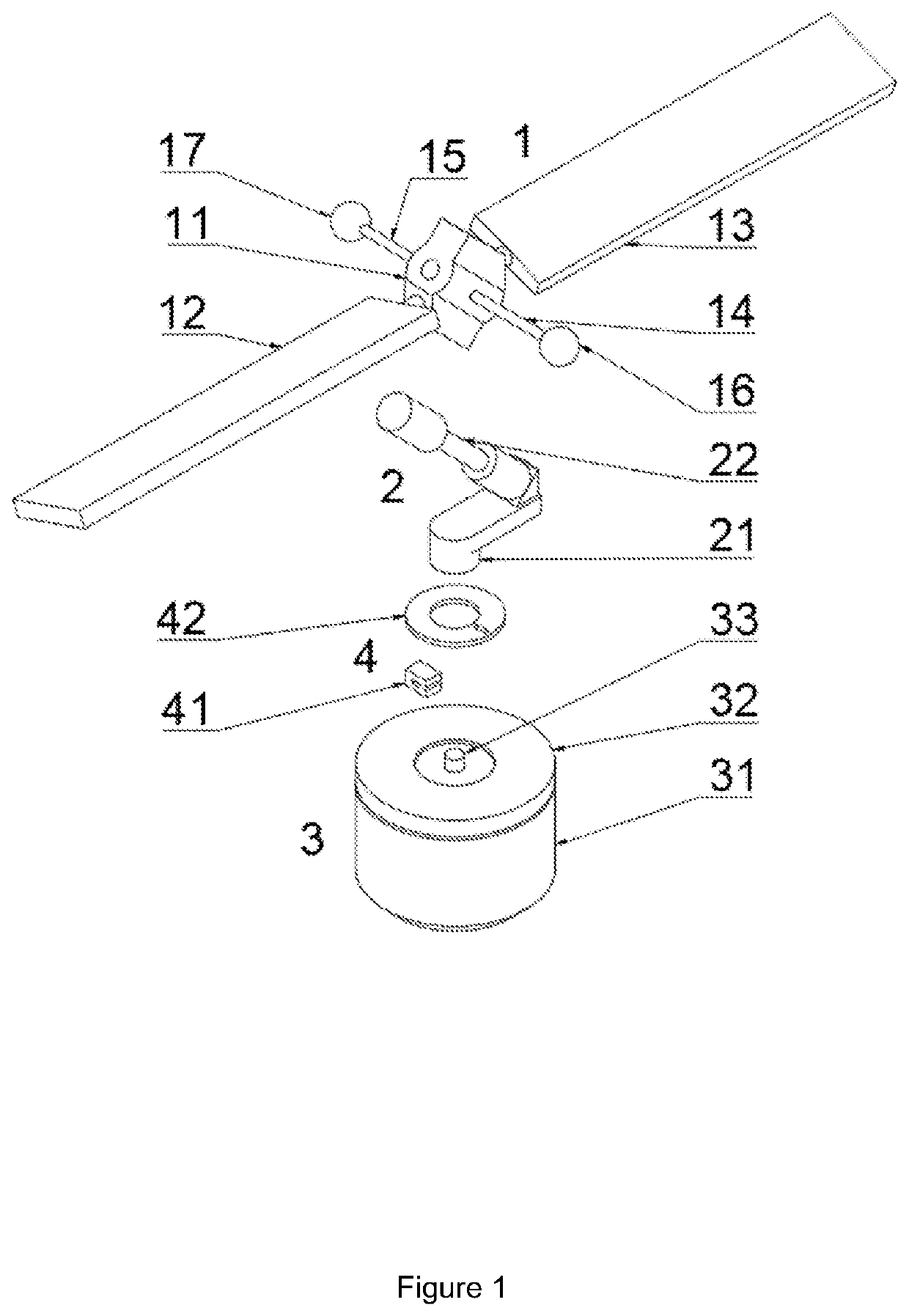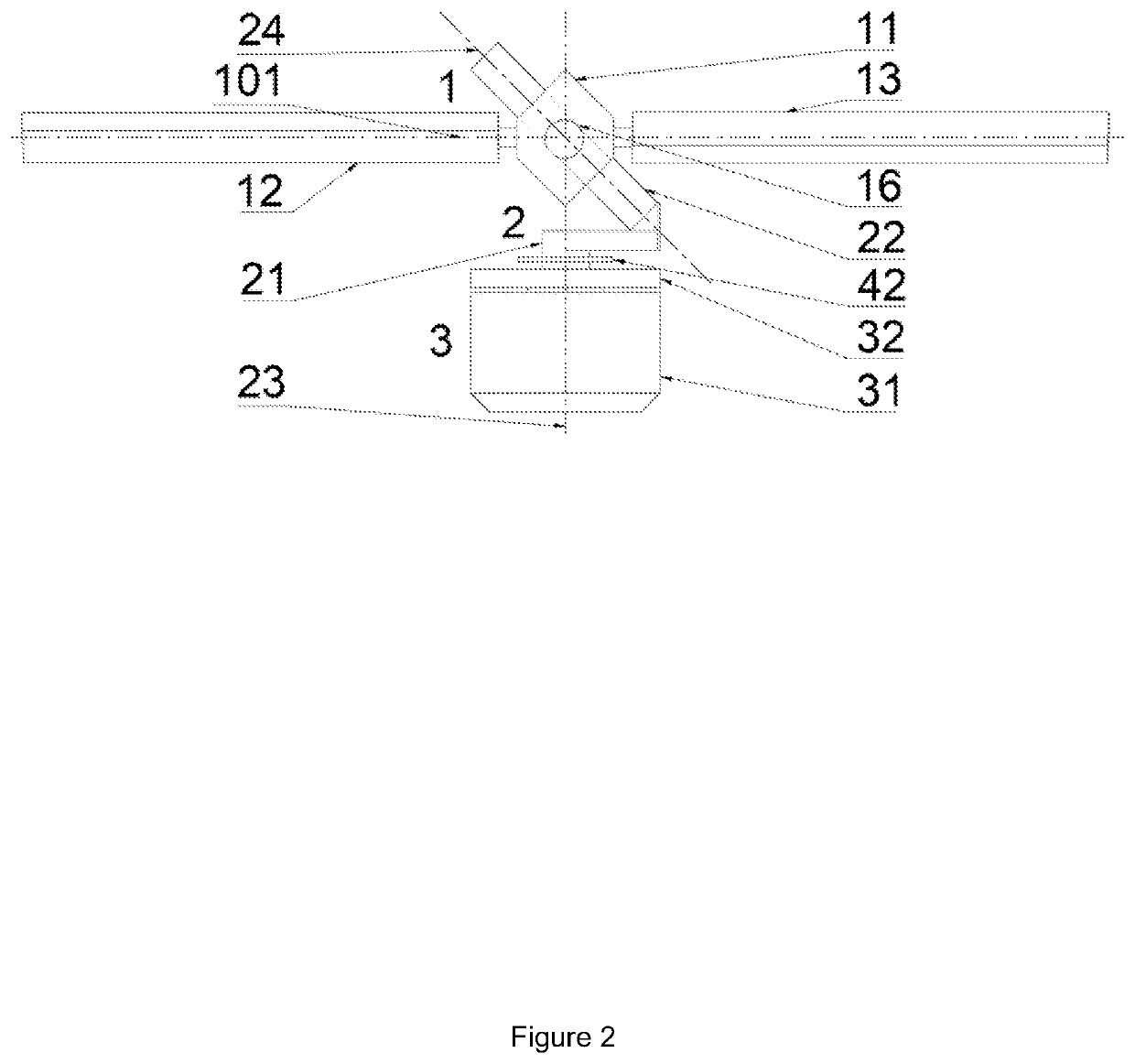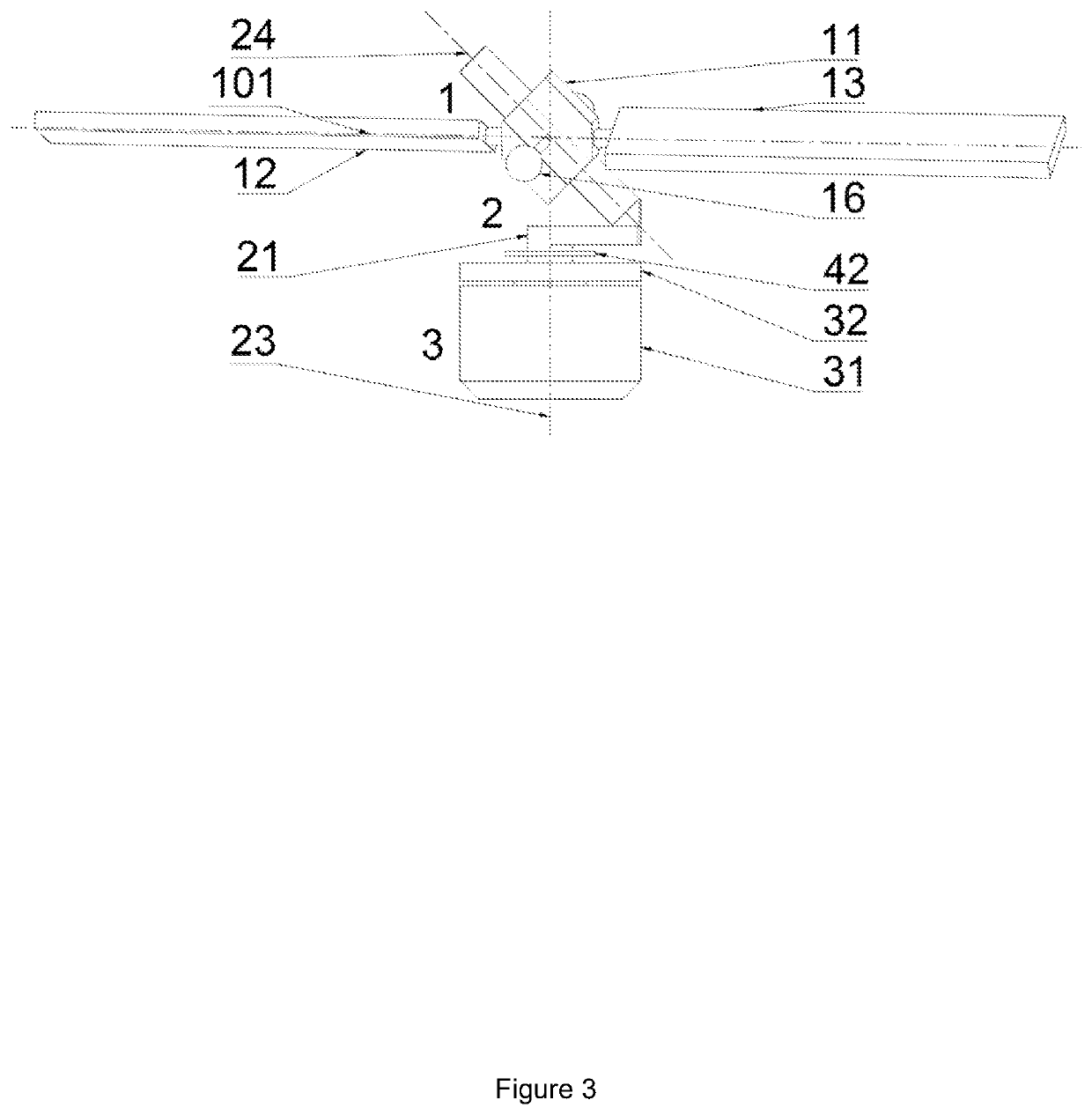Pulse-Induced Cyclic Control Lift Propeller
a cyclic control and propeller technology, applied in the field of aeronautical vehicles, can solve the problems of simple devices, high cost, complicated mechanical properties, etc., and achieve the effect of increasing the mass moment of inertia
- Summary
- Abstract
- Description
- Claims
- Application Information
AI Technical Summary
Benefits of technology
Problems solved by technology
Method used
Image
Examples
Embodiment Construction
[0032]FIG. 1 is an exemplary illustration of the single-skewed-hinge passive rotor mechanism in an exploded view, according to an aspect of the present disclosure. The components of this mechanism may include propeller assembly 1, mast assembly 2, motor assembly 3, and encoder assembly 4. The propeller assembly 1 may include a hub 11, blades 12 and 13, flybar arms 14 and 15, and flybar weights 16 and 17. The mast assembly 2 may include a mast 21 and a hinge 22. The motor assembly 3 may include a rotor 31, a stator 32, and a rotor shaft 33. The connection between the rotor and rotor shaft is assumed to be rigid. The encoder assembly 4 may include a fixed sensor 41 and a rotating sensed object 42.
[0033]The connection between the mast 21 and the hub 11 may be a single hinge 22 skewed nominally, but not necessarily, at 45 degrees from the vertical mast spin axis towards the feathering axis of the blades 12 and 13. The hub 11 may be attached to components that increase the mass moment of...
PUM
 Login to View More
Login to View More Abstract
Description
Claims
Application Information
 Login to View More
Login to View More - R&D
- Intellectual Property
- Life Sciences
- Materials
- Tech Scout
- Unparalleled Data Quality
- Higher Quality Content
- 60% Fewer Hallucinations
Browse by: Latest US Patents, China's latest patents, Technical Efficacy Thesaurus, Application Domain, Technology Topic, Popular Technical Reports.
© 2025 PatSnap. All rights reserved.Legal|Privacy policy|Modern Slavery Act Transparency Statement|Sitemap|About US| Contact US: help@patsnap.com



